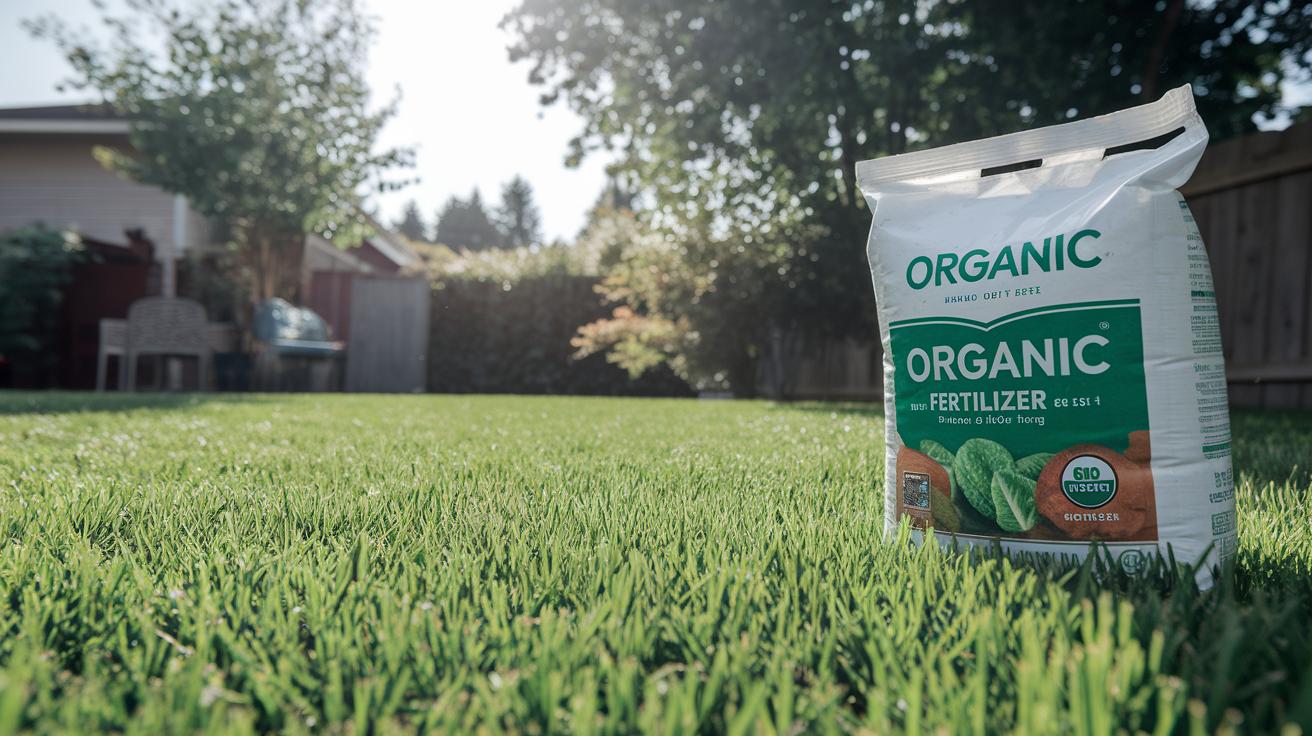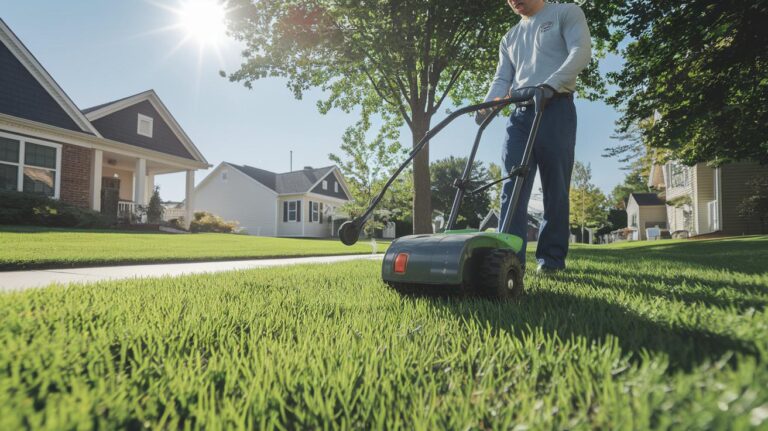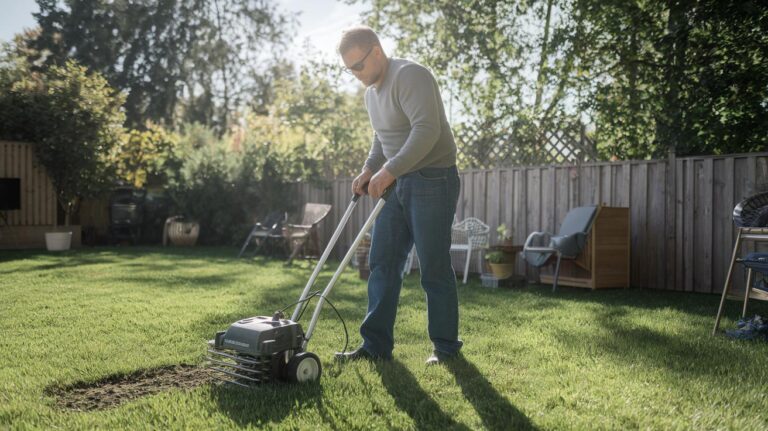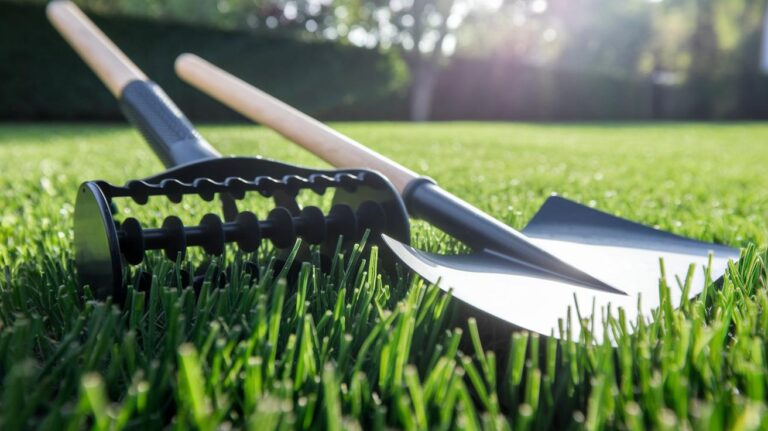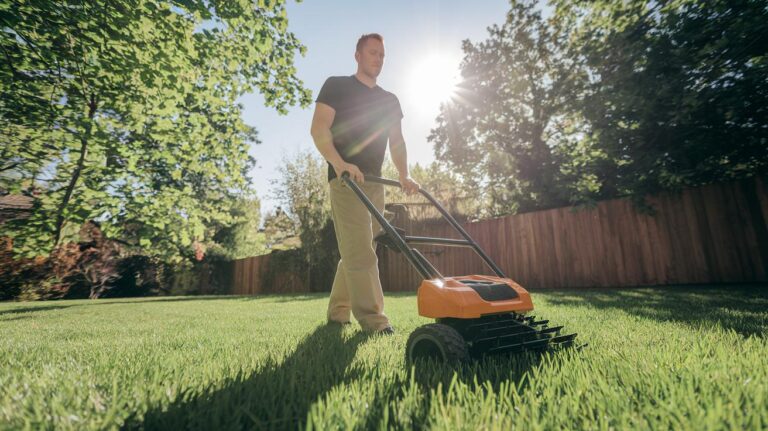Best Organic Lawn Fertilizer Ensures Lush Green Grass
Ever stared at brown patches in your grass and thought only harsh chemicals could help? I had the same worry, until I tried a gentle, organic approach!
By teaming up with earthworms and microbes (tiny living things that help soil), you feed your lawn from root to tip. I’ve found five simple organic feeds that bring steady, burn-free greening. Soon you’ll have a soft, green carpet you’ll love to feel under bare feet, with that fresh-mown smell in the air.
Best Organic Lawn Fertilizer Ensures Lush Green Grass
Ever wish your yard felt like a green carpet under your feet? We’ve gathered five organic lawn feeds that work with nature and bring your grass back to life. Take a peek at the lineup below.
| Rank | Product | N-P-K Ratio (nutrient mix for growth) | OMRI-Listed (organic cert) | Key Feature | Approx. Cost |
|---|---|---|---|---|---|
| 1 | Espoma Organic Lawn Food (BioBoost) | 5-3-0 | Yes | Slow-release nitrogen for gradual greening | $15/5 lb |
| 2 | Starter Fertilizer 15-20-10 Plus Iron | 15-20-10 | Yes | Balanced feed for new turf and root growth | $20/10 lb |
| 3 | Kellogg Garden Organics | 4-2-2 | Yes | All-purpose granules with micronutrients | $12/5 lb |
| 4 | Purely Organic Lawn Fertilizer | 6-2-0 | Yes | Fish and kelp blend for quick green-up | $18/8 lb |
| 5 | Milorganite | 6-4-0 | No | Non-burning, slow-release biosolid feed | $25/50 lb |
Espoma Organic Lawn Food’s organic fertilizer for lawn formula uses slow-release nitrogen so your grass turns green a bit each day. No sudden rush of color here, just even, steady growth with zero risk of burn. Have you ever watched new blades pop up darker than the old ones? It’s magic.
Planting new seed or laying sod? Starter Fertilizer 15-20-10 Plus Iron packs extra phosphorus (helps roots grow strong) and iron (boosts deep green color). Spread it right after seeding or sod install and watch those tiny roots grab hold fast. It’s like giving your lawn baby steps on solid ground.
Kellogg Garden Organics blends composted poultry manure (rich decayed organic matter that feeds plants) with other plant proteins. Those tiny soil microbes (helper creatures that break down food for grass) wake up and start improving soil structure. You’ll feel the earth crumble between your fingers.
Purely Organic Lawn Fertilizer mixes fish emulsion (liquid fish bits that pack nutrients) with seaweed extract (plant juice full of minerals). It’s the jolt your pale midseason grass needs. One quick feed and you’ll see fresh green tips peeking up in days.
Milorganite comes from treated biosolids (recycled organic waste turned into plant food). It feeds grass gently, so you won’t scorch your lawn if you overapply by accident. Yes, there’s a bit of a unique smell at first, kind of like wet compost, but it fades in about a week.
Calibrate your spreader to each bag’s directions. Aim for early morning or late afternoon so the cool air helps nutrients soak in. Then give your grass a light drink of water to lock it all down.
Ready to pick your perfect feed? Soon you’ll be sinking your toes into a rich, green lawn.
Types of Organic Lawn Fertilizer and Their Nutrient Profiles
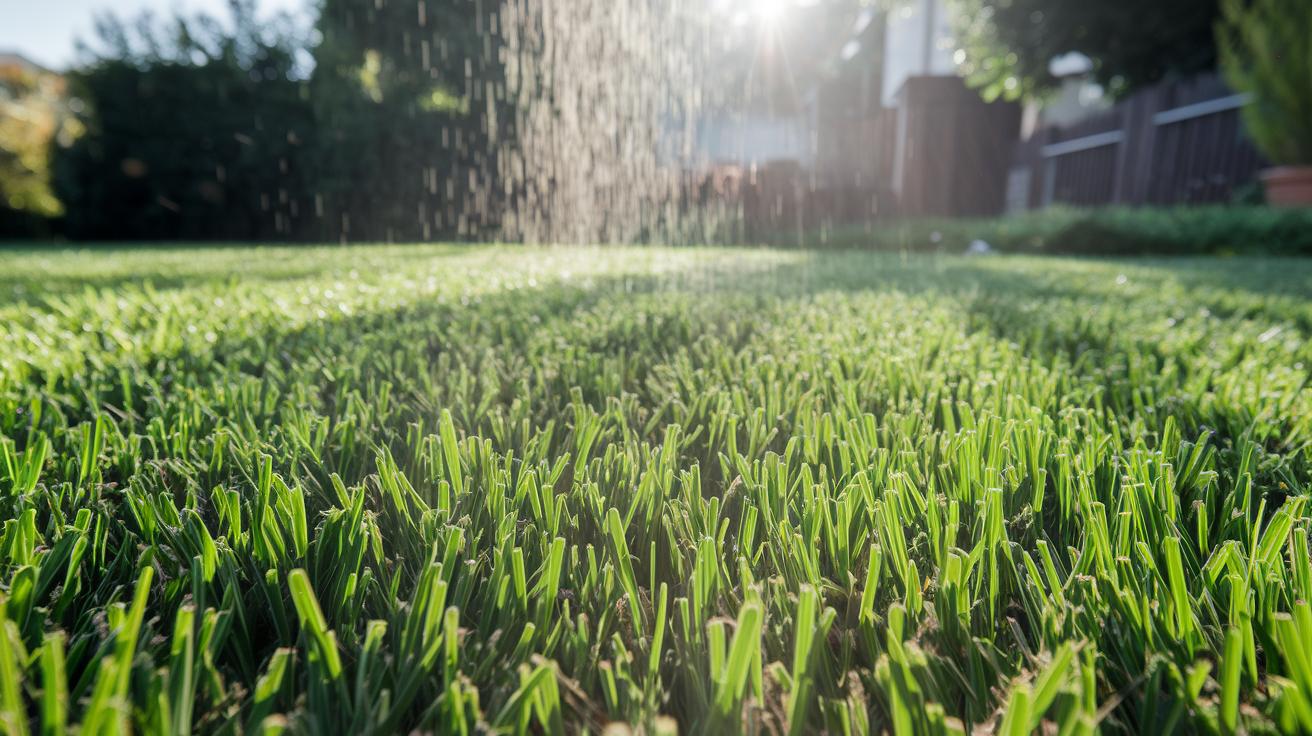
Have you ever thought of your lawn’s feed like your breakfast? It needs slow-burn energy, building minerals, and soil buddies that keep things happy.
-
Compost (decayed organic matter that enriches soil). N-P-K (nitrogen-phosphorus-potassium) about 1-1-1. It feels like soft earth and holds moisture so roots can breathe. Nutrients release slowly over weeks as microbes (tiny soil helpers) break it down.
-
Composted manure (cow or horse waste that’s fully aged). N-P-K around 2-1-1. It’s packed with microbial activity (little soil creatures cycling nutrients). Just topdress before you seed, but make sure it’s well aged so it won’t burn the grass.
-
Compost tea (liquid brew of mature compost). Mix water and compost at a 5 to 1 ratio. Apply every 4 to 6 weeks for a quick dose of life on tired turf. Oops, I once splashed some on my patio, plants loved it, but I learned to watch where I pour.
-
Bone meal and blood meal. Bone meal (ground animal bones) is about 3-15-0 for spring root growth. Blood meal (dried animal blood) is roughly 12-0-0 to kick-start green-up. Use blood meal sparingly so you don’t overdo it.
-
Fish emulsion (liquid fish bits rich in amino acids). N-P-K near 5-2-2. You’ll see brighter blades in days as it feeds nitrogen and micronutrients. It has a faint ocean smell, so rinse it in with water after spraying.
-
Seaweed extract (liquid kelp concentrate). It’s low in N-P-K but full of trace minerals and natural growth hormones (cytokinins). It helps your grass tough out heat or dry spells.
-
Worm castings (earthworm droppings full of microbes). N-P-K around 1-0-0 but bursting with beneficial microbes. The crumbly texture mixes into topsoil for better aeration (air flow) and drainage.
Mix and match based on what your lawn needs. Compost for overall health. Fish emulsion for a quick green glow. Seaweed extract when your grass needs a gentle lift.
Picture your toes sinking into that lush, green carpet on a sunny afternoon.
Choosing the Right Organic Lawn Fertilizer for Your Soil and Grass Type
Have you ever dug a little hole and felt the warm earth crumbling between your fingers? Before you spread any fertilizer, run a soil test (it shows what your dirt needs). A simple kit or a lab sample tells you your pH (how acidic or basic your soil is) and missing nutrients like nitrogen (leaf food) and potassium (root booster). It’s just like a health check-up for your lawn.
If your soil pH dips below 6.0, dust on some lime (ground-up rock that raises pH). If it climbs above 7.0, sprinkle sulfur (powder that lowers pH). Fixing pH first makes sure your grass can really soak up all the good stuff you’ll add next.
And then comes aeration. Core aeration (pulling out small plugs of soil) gives roots room to grow. For cool-season grasses like Kentucky bluegrass or tall fescue, fall is prime time, expect 2 to 3-inch plugs popping out. Warm-season turf such as bermudagrass prefers late spring or early summer. When you aerate, choose an organic fertilizer with slow-release nitrogen (food that feeds plants over time) to keep those blades lush all season.
Now, match your grass to the feed. Tall fescue thrives on moderate-nitrogen mixes so it grows thick and strong. Bermudagrass does best with slow-release or balanced blends to match its speedy growth. When your feed and grass are on the same page, every blade gets just what it needs.
Oops, spilled a little compost (decayed organic matter that enriches soil) on the walkway? No sweat, sweep it right back onto the lawn and pat it down. Your yard will thank you.
Application Tips for Best Organic Lawn Fertilizer Performance
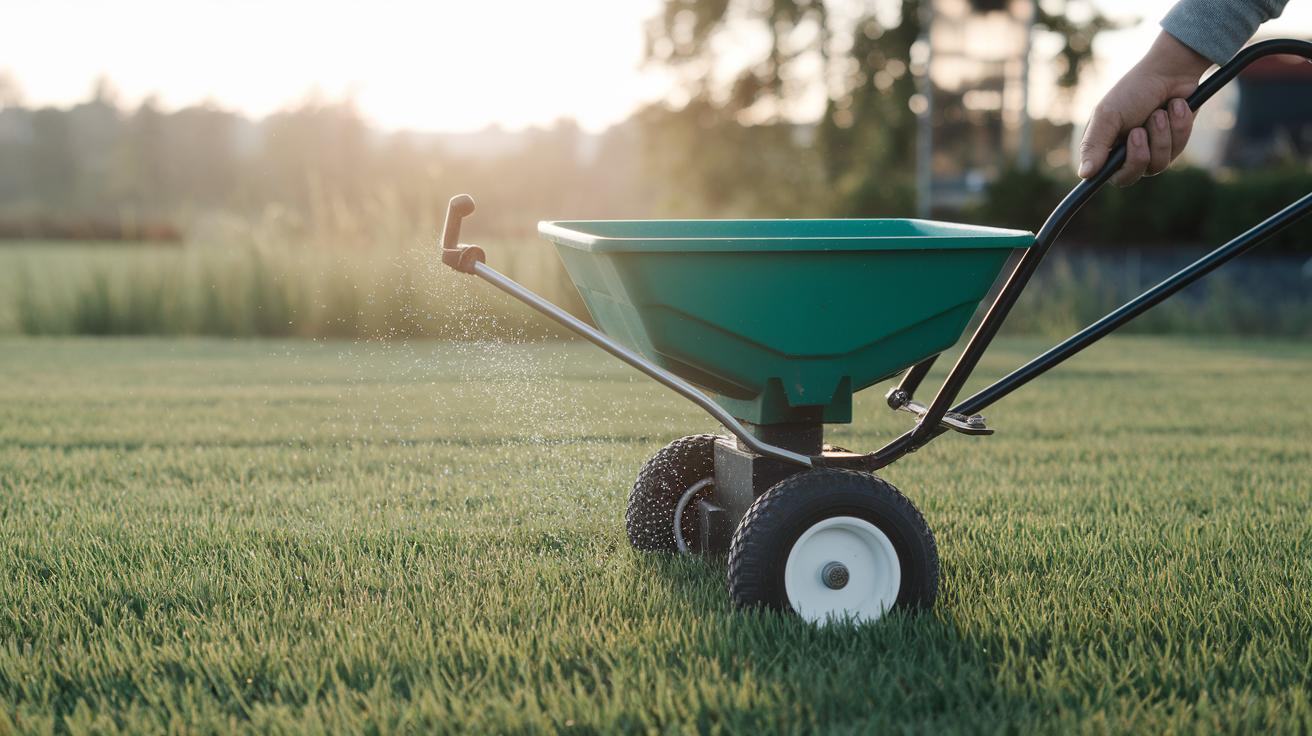
Before you spread any fertilizer, clip your grass to about 2 inches and rake off the thatch (a tangled mat of old, dead blades). You know how thirsty dirt gets after a hot week? Water your lawn about a day before. Moist soil soaks up the feed like a sponge.
-
Set your rotary spreader (the tool that flings granules, or small bits of fertilizer) on a low setting. Check the bag label for the right rate. Then do a quick test walk on your driveway to make sure the pellets pour out evenly. This way you won’t overfeed or underfeed.
By the way, my dog thinks each pellet is a snack. Back to prepping. -
If you’d rather feed with liquids, hook up a lawn injector or grab a pump sprayer. Mix it exactly as the maker suggests. Then walk at a steady pace so every blade gets its share.
-
Aim for early morning or late afternoon. Cooler air slows evaporation and helps nutrients sink into the soil.
-
A few hours after spreading, give your lawn a gentle watering. This jumpstarts the slow-release action and pushes nutrients down to the roots. Just avoid heavy rain right after, too much water can wash it all away.
Wait for the grass to dry before letting kids or pets play. Store any leftover fertilizer in a cool, dry spot. Follow these steps and your lawn will soak up every bit of organic goodness.
Seasonal Guide to the Best Organic Lawn Fertilizer by Time of Year
When your grass wakes up in spring, it’s time for a nitrogen-rich, slow-release blend (slow-release means it feeds grass over time) that feels like breakfast for tired turf. Pick a mix labeled 5-3-0 (those numbers show nitrogen-phosphorus-potassium) so each blade turns bright green and bounces back from winter naps. The warm earth crumbling between your fingers will thank you.
But come summer’s heat, you don’t want to push growth that then cries out for water. Choose an organic summer feed with balanced N-P-K so roots stay deep and sturdy rather than thirsty top growth. A little extra potassium helps grass shrug off midday sun stress.
As fall cools the air, focus on root reserves, think of them as your lawn’s winter pantry. A 3-15-10 ratio (phosphorus helps roots, potash is potassium for stress tolerance) is like stocking up before the cold. It builds strong crowns and helps grass sleep through frost without worry.
Winter in cool-season areas calls for a gentle hand. You can skip feeding or sprinkle sparingly on the lawn before it nods off. Warm-season grasses are already taking their own naps under the cold.
You could follow a climate-based plan with four or five feedings, but here’s a simpler trick: the three-holiday method. Feed on Memorial Day, Independence Day, and Labor Day. Many of us stick to 2–3 key feedings and watch our grass thrive all year. Keeps things easy and your turf happy.
DIY Organic Lawn Fertilizer: Homemade Recipes and Cost-Effective Alternatives
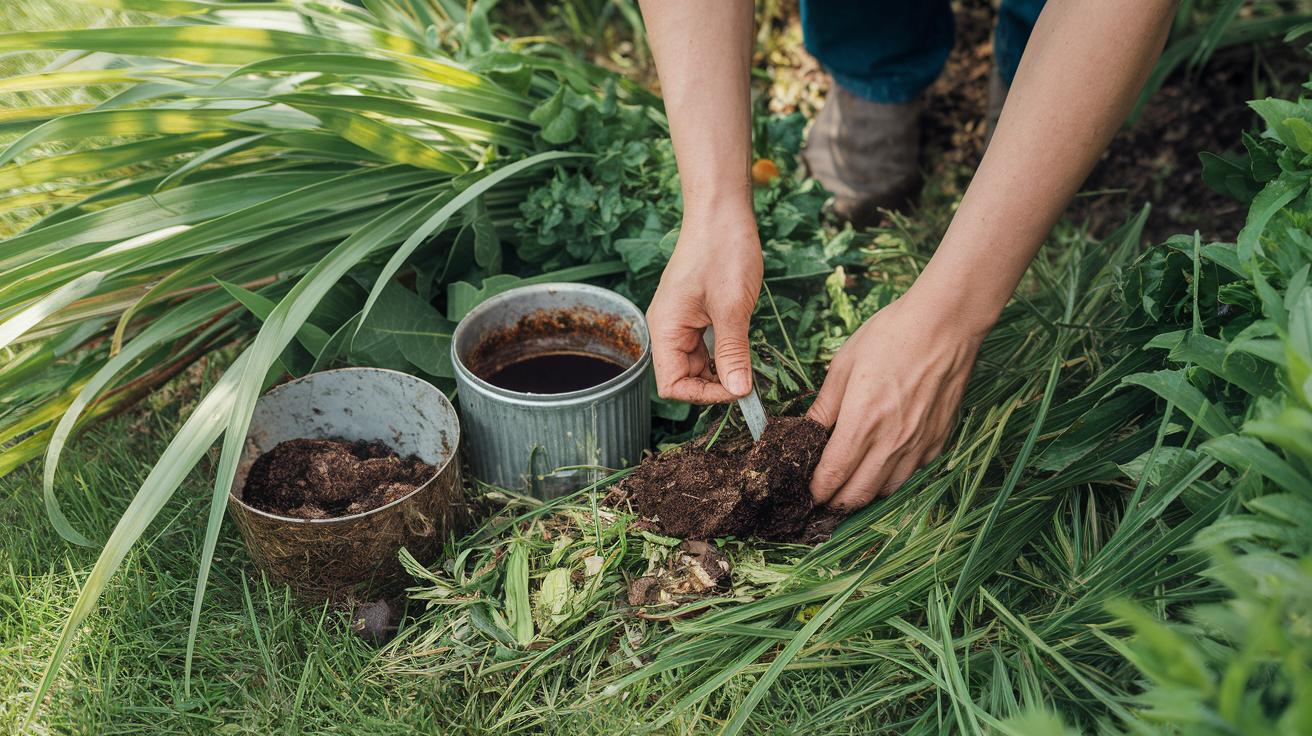
Ever look at your lawn and wonder if you could make your own fertilizer (plant food that helps grass grow)? These simple recipes turn kitchen scraps and yard waste into healthy grass fuel. No fancy tools needed – just some buckets, a watering can, and a little elbow grease!
-
Compost tea: Fill a 5-gallon bucket one-fifth full of compost (decayed organic matter that enriches soil). Add water and stir, then let it steep for 24 hours. Strain the dark liquid through old pantyhose or a fine mesh strainer. Spray it on your grass so microbes (tiny living helpers) get moving. Oops, I once dripped some on my patio stones. Grass loved it, stones got slippery.
-
Fish-scrap emulsion: Toss fish waste (heads, bones, guts) into a sealed container. Cover with water and set it in the shade for 3 to 7 days. Strain out the solids and dilute the liquid at one part fish tea to ten parts water. Pour it on your grass for a nitrogen (plant nutrient) boost.
-
Coffee grounds: Sprinkle half a cup of used coffee grounds per 100 square feet. They add a mild dose of nitrogen (plant nutrient) and organic matter while earthworms go to town. Your grass gets fed, and you recycle your morning brew!
-
Grass-clipping mulch: Skip the bag – leave clippings on your lawn. They break down and return about 25 to 30 percent of your yard’s nitrogen needs back to the soil. It’s like giving your grass a free snack.
-
Worm castings: Worm castings (worm droppings that enrich soil) are like microbe gold. Spread a quarter-inch layer on top of your grass or mix them into your compost pile. They help with aeration (air flow) and keep nutrients cycling nicely.
Try one method at a time or mix a couple to see which recipe your lawn likes best. By the way, if you have a balcony garden, these fertilizers work wonders in containers too. Soon you’ll have a lush green carpet that’s easy on your wallet and free of store-bought chemicals.
Environmental Benefits and Safety of Organic Lawn Fertilizer
You know how rainwater can wash chemicals from your yard into nearby streams? Organic lawn feed stops that synthetic runoff (water carrying human-made chemicals) before it hits lakes. I love seeing clear water rippling over stones. And fish get to swim without nasty stuff clouding their world.
Organic feed gives nutrients slowly, like a gentle sipping straw for your grass. So each blade takes just what it needs. No more burnt tips or browned patches. Your lawn stays lush and green without a scorch in sight.
When tiny microbes (microscopic helpers) break down natural materials, they release far fewer greenhouse gases than factory-made fertilizers. That means we all breathe easier. Have you ever thought about how yard care affects the air we share?
Under your toes, earthworms wiggle through soft soil, and friendly bacteria buzz around roots. They build up soil structure so water drains right and roots dig deep. It’s like a secret city underground making your lawn stronger each day.
Look for certified organic or OMRI-listed products (approved by the Organic Materials Review Institute). These guarantee non-toxic ingredients you can trust. Oops, I once spilled a bag and thought it smelled odd, turns out it was all just natural goodness.
Got pets or kids? With pet-safe lawn fertilizer, Fido and your little ones can run outside right after watering. No chemical burns or worries. You’ll love the peace of mind when everyone’s bouncing around the yard.
Organic feeds support a soil food web, from tiny fungi to busy earthworms, all churning nutrients into the ground. When you watch the soil crumble between your fingers, you’ll see why it’s so alive.
Rich soil holds more carbon, tucks it safely underground, and helps your lawn spring back after dry spells or heavy foot traffic. Planting now sets you up for a green, resilient yard all season.
Where to Buy Organic Lawn Fertilizer and Cost Considerations
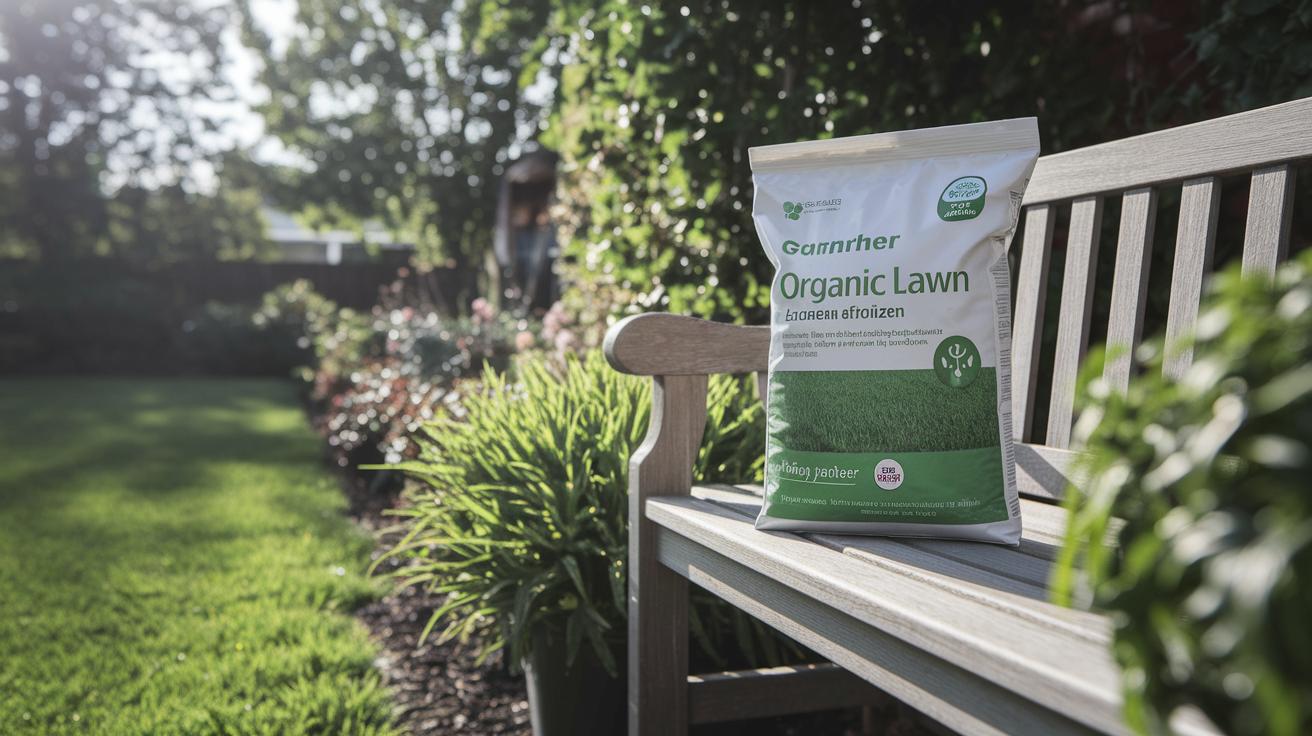
You can find organic lawn feed (natural plant food) at local garden centers, farm suppliers, or landscaping co-ops.
Um, have you smelled that warm earth scent in garden centers?
It feels like spring even before you get home.
If you’d rather shop online, Amazon has plenty of organic lawn feed options.
You’ll often spot OMRI-listed (certified by the Organic Materials Review Institute) blends from top brands.
And some makers even offer store locators so you can find Milorganite or specialty mixes near you.
Buying compost (decayed organic matter that enriches soil) in bulk from farms usually costs about $0.30 to $0.50 per pound.
That’s great when you need several cubic yards.
Bagged organic fertilizers with OMRI approval tend to run $10 to $20 for a 5 to 10-pound bag.
Compare the cost per pound to see how far your budget goes.
Then pick the feed strength that suits your yard size.
Keep your fertilizer in a cool, dry spot like a basement shelf or a garage nook so it stays fresh.
I once forgot a bag behind my workbench – oops – and it still worked great months later.
Sealed bags hold their nutrient power for up to two years.
That way, any leftovers still pack a punch when you need to top up next season.
Final Words
Diving into our top-rated picks, we covered OMRI-listed stars like Espoma Organic Lawn Food, Kellogg Garden Organics, Purely Organic, and Milorganite, each offering slow-release nitrogen or balanced N-P-K for steady greening.
We broke down compost care, like compost tea’s microbe boost and fish emulsion’s fast nitrogen boost, and showed how soil tests, pH tweaks, and precise timing help your grass soak up every nutrient.
With simple application steps, a seasonal feeding plan, budget-friendly DIY recipes, and eco-friendly safety perks, you’re all set to pick the best organic lawn fertilizer and watch your yard thrive.
FAQ
What is the most effective organic fertilizer?
The most effective organic fertilizer is often a slow-release, OMRI-listed mix like Milorganite or Espoma BioBoost (5-3-0). They feed grass steadily, boost soil microbes, and cut burn risk.
Is organic lawn fertilizer worth it?
Organic lawn fertilizer is worth it for people who want long-term soil health, steady nutrient release, and fewer chemicals around kids and pets. It works slower but boosts soil biology.
How do I fertilize my lawn naturally at home?
To fertilize your lawn naturally at home, apply compost tea, worm castings, or a diluted fish-emulsion spray. Grasscycling (leaving clippings) and coffee grounds add nitrogen without chemicals.
What is the main disadvantage of using organic fertilizers?
The main disadvantage of using organic fertilizers is their slow nutrient release and the need for larger application volumes, which can mean more frequent feedings and extra labor compared with synthetics.
Where can I buy top organic lawn fertilizer brands?
You can buy top organic lawn fertilizer brands like Milorganite, Espoma, and Kellogg Garden Organics at garden centers, Home Depot, Amazon, or local landscaping co-ops.
Which organic fertilizer works best for fall?
The organic fertilizer that works best for fall is one higher in phosphorus and potash, such as a 5-15-10 plus iron mix or Milorganite applied in early autumn to strengthen roots for winter.

